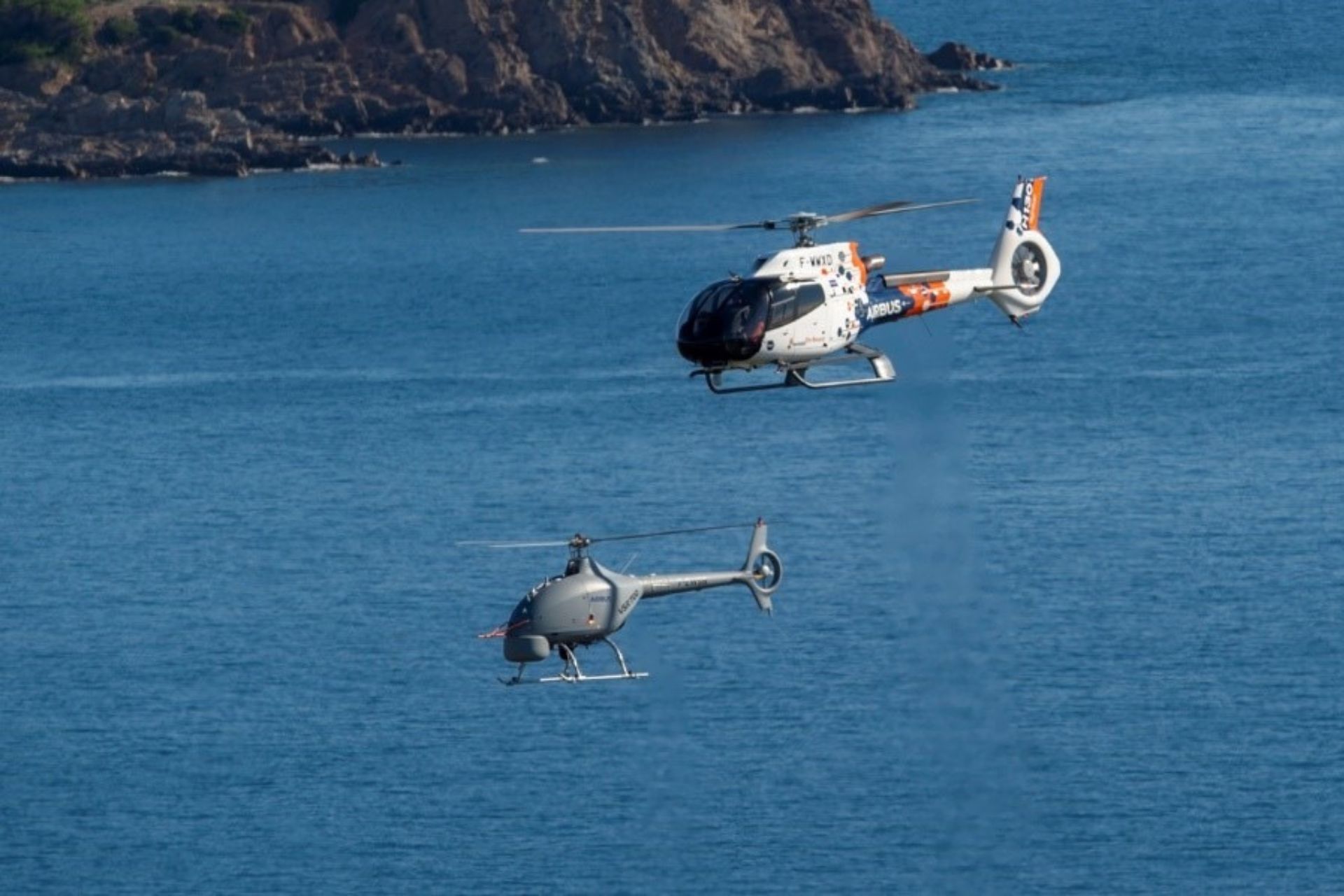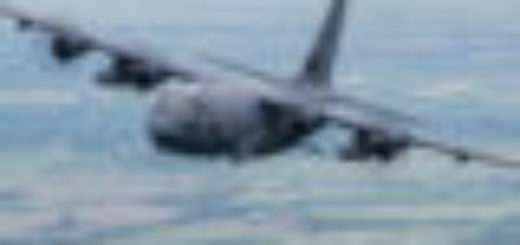European MUSHER Project Validates In-Flight Interoperability between Helicopters and Drones

{loadposition bannertop}
{loadposition sidebarpub}
Between September and October 2024, the European Manned Unmanned System for Helicopter (MUSHER) project reached a key milestone by validating in-flight interoperability between helicopters and drones, marking a significant advancement for European military missions. Conducted from Île du Levant in France and in Italy, these tests demonstrated the feasibility of remotely controlling drones via satellite communication. This ambitious program, led by France alongside Italy, Spain, and Belgium, is paving the way for integrating new capabilities into the armed forces.
Follow Army Recognition on Google News at this link
The H130 helicopter and the VSR700 drone off the coast of Île du Levant on October 9, 2024 (Picture source: French MoD)
The testing campaign was orchestrated with support from the French Defense Procurement Agency – Missile Testing (DGA-EM), utilizing satellite communication to ensure the remote control of the drones. The tests are part of the European MUSHER project, launched in December 2021, which brings together France as the lead nation, along with Italy, Spain, and Belgium, to develop and validate technologies for cooperation between manned and unmanned platforms. The project is co-managed by the French Defense Innovation Agency (AID) and the DGA, involving teams from the 3D Action Management Unit, DGA Engineering and Projects, and DGA-EM.
Preparatory work led to the development and testing of an innovative communication system capable of effectively linking the various aircraft involved in joint missions. The tests were carried out in several phases, first separately and then simultaneously, with operations conducted from the DGA-EM site on Île du Levant and another base in southern Italy.
For the French side, the tests involved an H130 helicopter equipped with specific sensors, paired with a VSR700 drone developed by Airbus Helicopters. In Italy, the trials used a helicopter from Leonardo, paired with an SW-4 Solo, a hybrid aircraft that can be piloted or operated autonomously via a drone interface. Both test sites and the aircraft were interconnected via satellite, ensuring real-time communication and the ability to control drones over long distances.
The flight demonstration on October 9, 2024, was a highlight of the project, marking a decisive step for interoperability. In the presence of a European Commission representative, the tests showed that interaction levels between helicopters and drones could be progressively increased. This culminated in an impressive demonstration where a drone operated from one country was controlled by a helicopter located 1,000 kilometers away, thus proving the feasibility of joint operations within the European Union.
These successful tests anticipate new capabilities for future-generation helicopters, particularly the upgraded Guépard and Tiger models, which will be equipped to cooperate with drones in future military missions. The addition of drones will significantly expand the scope of possible missions, providing the armed forces with an important strategic asset thanks to the introduction of unmanned platforms, thereby increasing the reach and effectiveness of operations.
The MUSHER testing campaign represents a notable advancement in military aerospace, paving the way for more integrated manned and unmanned systems in European air operations. The progress achieved demonstrates not only the technological capabilities but also the commitment to enhancing cooperation among European nations for a common defense, laying the groundwork for the future of interoperable air systems.

{loadposition bannertop}
{loadposition sidebarpub}
Between September and October 2024, the European Manned Unmanned System for Helicopter (MUSHER) project reached a key milestone by validating in-flight interoperability between helicopters and drones, marking a significant advancement for European military missions. Conducted from Île du Levant in France and in Italy, these tests demonstrated the feasibility of remotely controlling drones via satellite communication. This ambitious program, led by France alongside Italy, Spain, and Belgium, is paving the way for integrating new capabilities into the armed forces.
The H130 helicopter and the VSR700 drone off the coast of Île du Levant on October 9, 2024 (Picture source: French MoD)
The testing campaign was orchestrated with support from the French Defense Procurement Agency – Missile Testing (DGA-EM), utilizing satellite communication to ensure the remote control of the drones. The tests are part of the European MUSHER project, launched in December 2021, which brings together France as the lead nation, along with Italy, Spain, and Belgium, to develop and validate technologies for cooperation between manned and unmanned platforms. The project is co-managed by the French Defense Innovation Agency (AID) and the DGA, involving teams from the 3D Action Management Unit, DGA Engineering and Projects, and DGA-EM.
Preparatory work led to the development and testing of an innovative communication system capable of effectively linking the various aircraft involved in joint missions. The tests were carried out in several phases, first separately and then simultaneously, with operations conducted from the DGA-EM site on Île du Levant and another base in southern Italy.
For the French side, the tests involved an H130 helicopter equipped with specific sensors, paired with a VSR700 drone developed by Airbus Helicopters. In Italy, the trials used a helicopter from Leonardo, paired with an SW-4 Solo, a hybrid aircraft that can be piloted or operated autonomously via a drone interface. Both test sites and the aircraft were interconnected via satellite, ensuring real-time communication and the ability to control drones over long distances.
The flight demonstration on October 9, 2024, was a highlight of the project, marking a decisive step for interoperability. In the presence of a European Commission representative, the tests showed that interaction levels between helicopters and drones could be progressively increased. This culminated in an impressive demonstration where a drone operated from one country was controlled by a helicopter located 1,000 kilometers away, thus proving the feasibility of joint operations within the European Union.
These successful tests anticipate new capabilities for future-generation helicopters, particularly the upgraded Guépard and Tiger models, which will be equipped to cooperate with drones in future military missions. The addition of drones will significantly expand the scope of possible missions, providing the armed forces with an important strategic asset thanks to the introduction of unmanned platforms, thereby increasing the reach and effectiveness of operations.
The MUSHER testing campaign represents a notable advancement in military aerospace, paving the way for more integrated manned and unmanned systems in European air operations. The progress achieved demonstrates not only the technological capabilities but also the commitment to enhancing cooperation among European nations for a common defense, laying the groundwork for the future of interoperable air systems.






